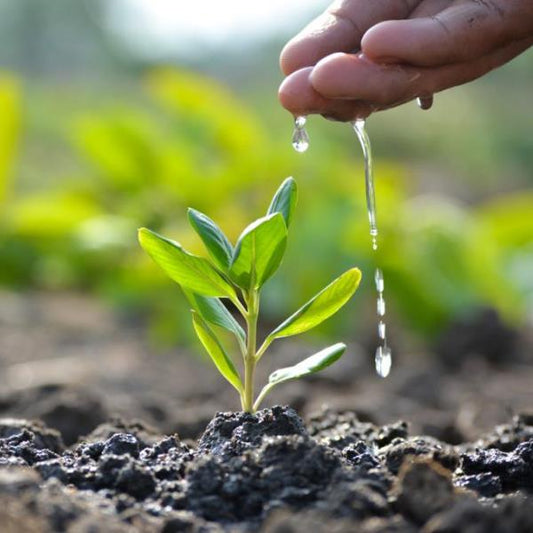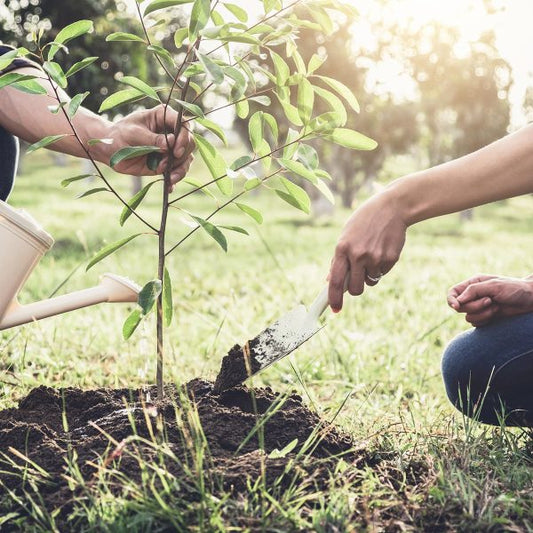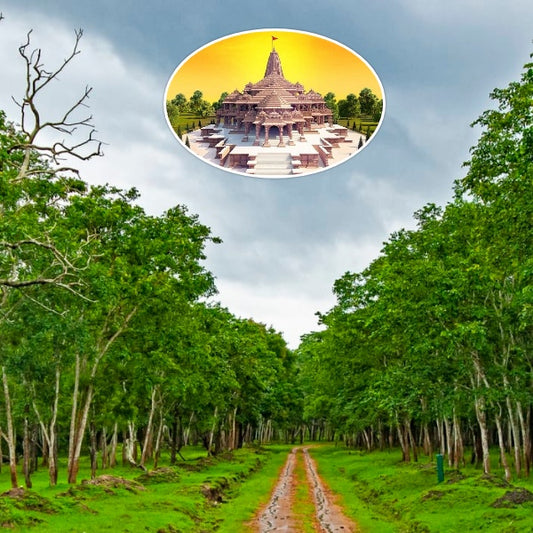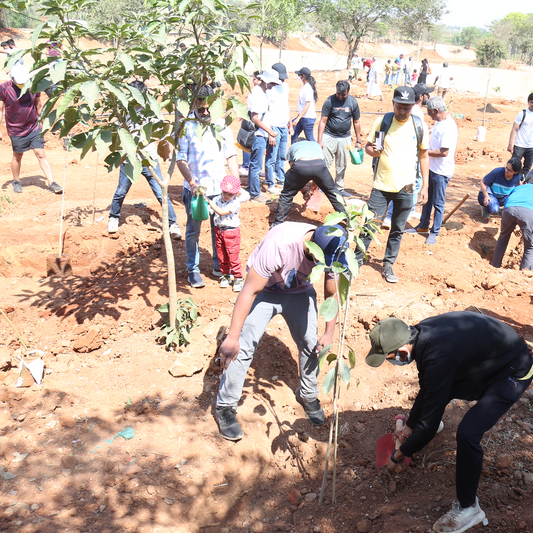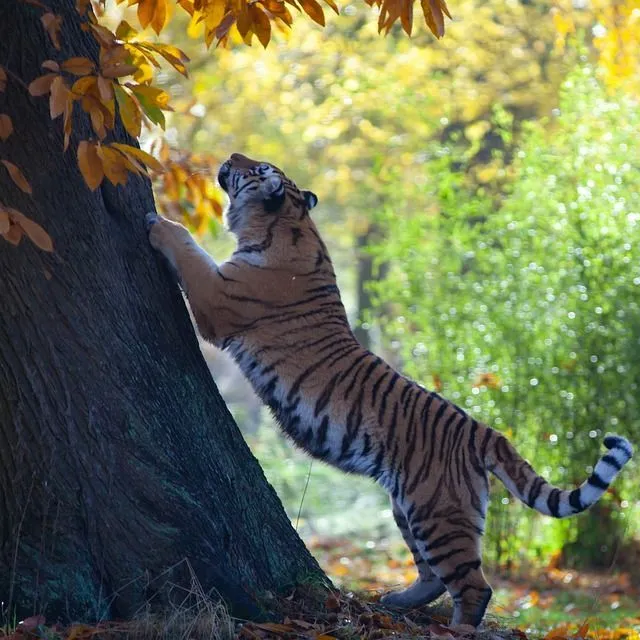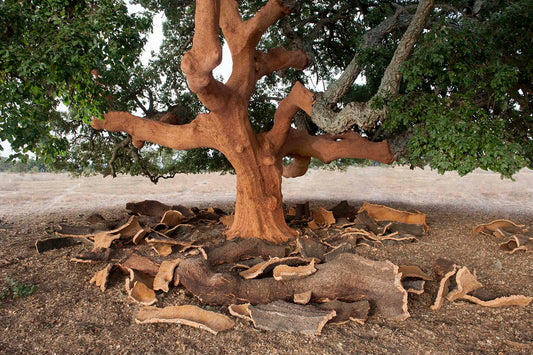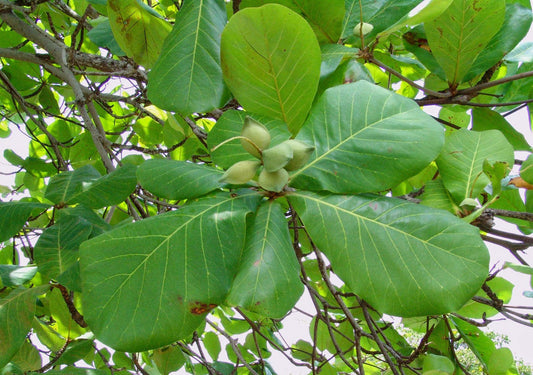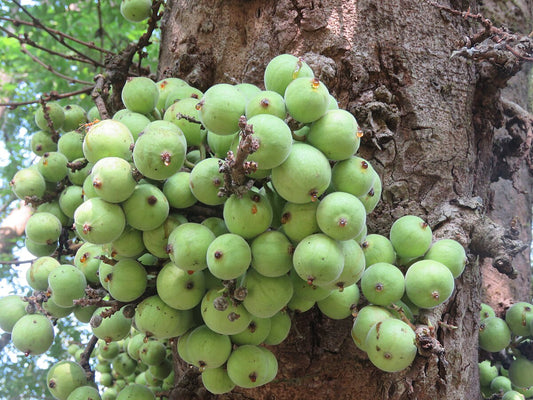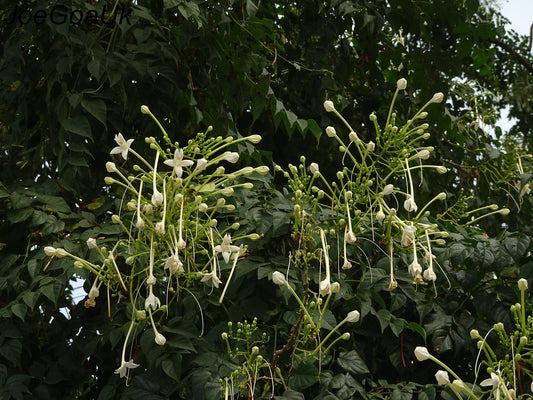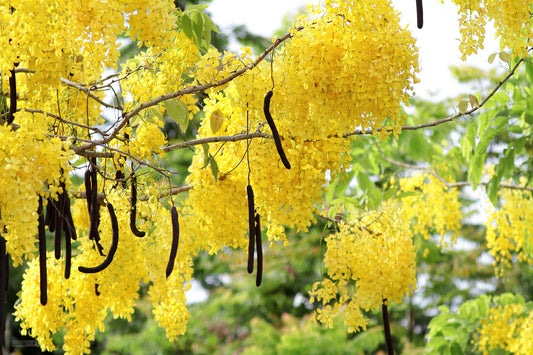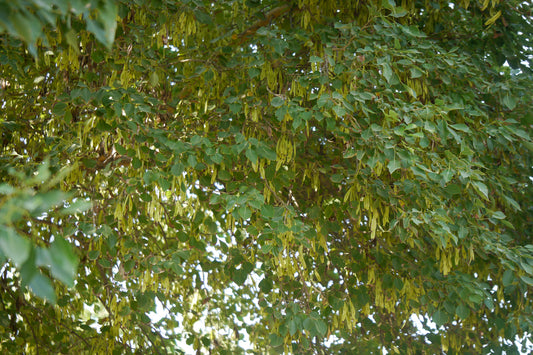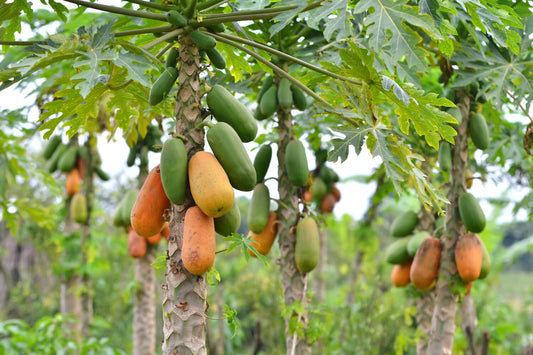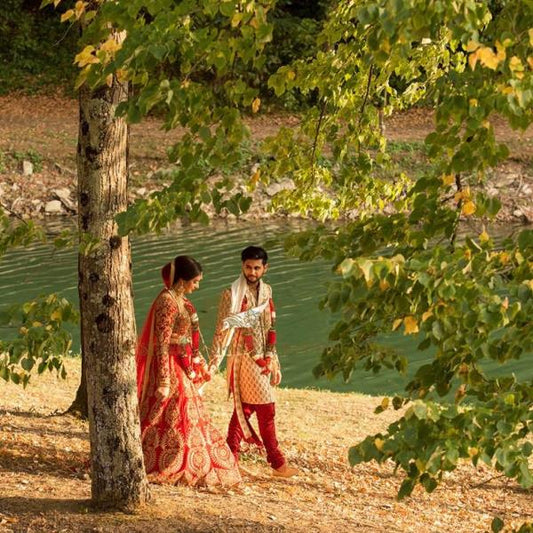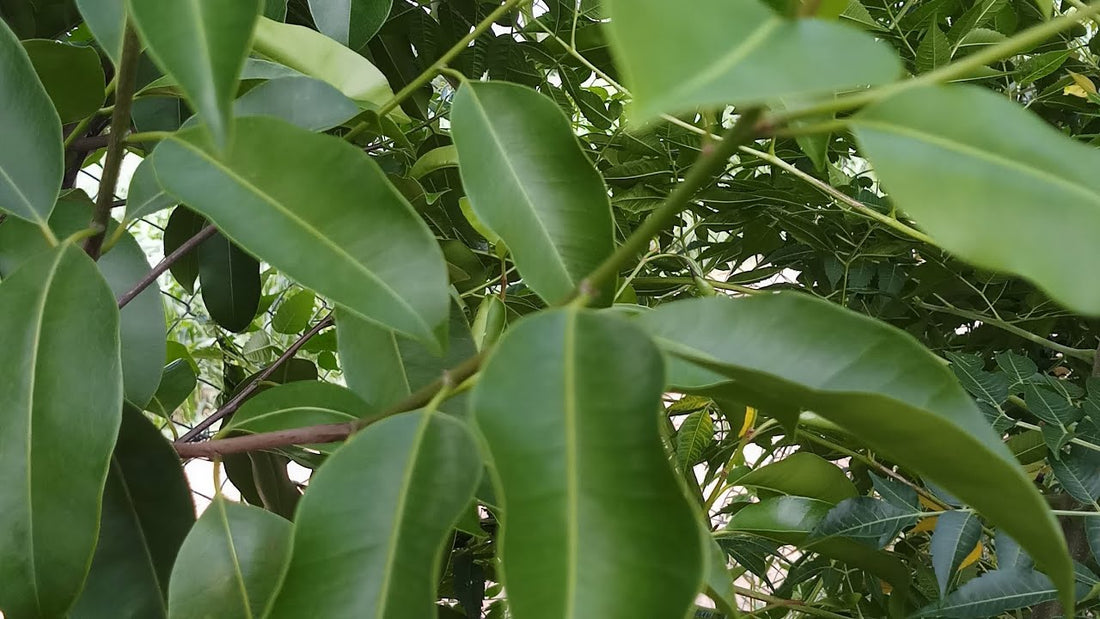

In the lush landscapes of South Asia, the Maulsari Tree, scientifically known as Mimusops elengi, stands as a fragrant guardian, symbolizing cultural splendor and botanical majesty. This elegant tree, adorned with sweet-scented flowers and glossy foliage, not only graces the tropical ter Read more
Trending
Trees for Corporates
Maulsari Tree
You may also like
Corporate Plantations
Maulsari Tree Facts
Explore intriguing facts about the Maulsari tree, scientifically known as Mimusops elengi, celebrated for its fragrant flowers, medicinal properties, and cultural significance. Learn about its native range, historical uses, and unique characteristics.
Maulsari Tree Ecology
Delve into the ecological role of Maulsari trees in tropical and subtropical ecosystems. From providing habitat and food sources for wildlife to enhancing soil fertility and microclimate regulation, Maulsari trees play a vital role in ecosystem function and biodiversity conservation.
Maulsari Tree Habitat
Learn about the natural habitat of Maulsari trees, including tropical forests, riverbanks, and urban landscapes. With adaptations to diverse soil types and climatic conditions, Maulsari trees thrive in a variety of ecosystems, supporting biodiversity and ecological balance.
Maulsari Tree Growth and Adaptations
Gain insights into the growth patterns and adaptations of Maulsari trees to tropical environments. From evergreen foliage for year-round shade and shelter to deep root systems for water uptake, Maulsari trees exhibit unique traits for surviving in diverse habitats.
Maulsari Tree Cultivation
Learn about essential cultivation practices for growing Maulsari trees in home gardens and urban green spaces. From selecting suitable planting sites to providing proper care and maintenance, discover how to cultivate healthy and blooming Maulsari specimens.
Maulsari Tree Uses
Explore the diverse uses of Maulsari trees for human communities in tropical regions. From harvesting fragrant flowers for perfumery and religious rituals to using bark and leaves for traditional medicines, Maulsari trees have sustained livelihoods and cultural practices for centuries.
Maulsari Tree Economic Importance
Delve into the economic significance of Maulsari tree products and industries in tropical areas. From generating income through flower cultivation to supporting local handicrafts and herbal medicine production, Maulsari trees contribute to regional economies and sustainable livelihoods.
Maulsari Tree Environmental Benefits
Discover the environmental benefits of planting Maulsari trees for biodiversity conservation and urban greening. From providing habitat for pollinators and birds to improving air quality and mitigating urban heat island effects, Maulsari trees offer valuable ecosystem services in tropical landscapes.
Maulsari Tree Medicinal and Aromatic Uses
Learn about the medicinal and aromatic properties of Maulsari tree products. From using bark and leaves for treating dental issues and skin conditions to utilizing fragrant flowers for aromatherapy and insect repellent, Maulsari trees provide essential resources for human health and well-being.
Maulsari Tree Conservation
Understand the conservation challenges facing Maulsari trees due to habitat loss and urbanization. From promoting sustainable harvesting practices to establishing protected areas and community-based conservation initiatives, efforts are underway to safeguard Maulsari populations and tropical ecosystems.
Maulsari Tree Pest and Disease Management
Explore common pests and diseases that affect Maulsari trees and strategies for prevention and control. From insect pests like scales and mealybugs to fungal pathogens causing leaf spot and powdery mildew, integrated pest management practices can help maintain tree health.
Maulsari Tree Symbolism and Cultural Significance
Discover the cultural symbolism and spiritual significance of Maulsari trees in tropical cultures and traditions. From representing love and fertility to being associated with deities and religious ceremonies, Maulsari trees hold profound cultural meanings and values.
Maulsari Tree Myths and Legends
Explore myths, legends, and folklore associated with Maulsari trees in tropical folklore and oral traditions. From tales of divine origin and supernatural powers to stories of love and transformation, Maulsari trees have inspired human imagination and storytelling for generations.
Maulsari Tree Art and Crafts
Learn about the artistic and craft uses of Maulsari tree materials in traditional handicrafts and artisanal products. From carving wood into sculptures and furniture to using bark and seeds for decorative items and jewelry, Maulsari trees have provided essential resources for cultural expression and livelihoods.
Maulsari Tree Research and Education
Discover research initiatives and educational programs focused on Maulsari tree biology, ecology, and conservation. From studying genetic diversity and pollination ecology to raising awareness about sustainable resource management, research and education efforts contribute to informed decision-making and conservation action.
Maulsari Tree Traditional Knowledge
Explore traditional knowledge systems related to Maulsari trees held by indigenous communities and tropical dwellers. From harvesting practices and cultural ceremonies to medicinal plant use and ecological wisdom, Maulsari trees are integral to tropical cultures and livelihoods.
Maulsari Tree Climate Resilience
Learn about the role of Maulsari trees in climate resilience and adaptation in tropical regions. From providing shade and moisture retention to enhancing soil fertility and carbon sequestration, Maulsari trees contribute to ecosystem resilience and livelihood security in the face of climate change.
Maulsari Tree Agroforestry
Explore the potential of Maulsari trees in agroforestry systems for sustainable land use and livelihoods. From integrating tree planting with crop cultivation to enhancing soil fertility and water conservation, Maulsari trees offer multiple benefits for smallholder farmers and rural communities in tropical areas.
Maulsari Tree Ecotourism
Discover opportunities for eco-tourism and community-based tourism centered around Maulsari trees and tropical landscapes. From guided nature walks and cultural exchanges to sustainable tourism initiatives and tropical garden experiences, Maulsari trees offer immersive experiences for travelers and nature enthusiasts.
FAQ
What is a Maulsari tree?
The Maulsari tree, scientifically known as Mimusops elengi, is a flowering evergreen tree native to the Indian subcontinent and Southeast Asia. It belongs to the Sapotaceae family and is prized for its fragrant flowers, medicinal properties, and cultural significance.
Where are Maulsari trees typically found?
Maulsari trees are commonly found in tropical and subtropical regions of the Indian subcontinent, including India, Nepal, Bangladesh, Sri Lanka, and Myanmar. They thrive in diverse habitats, including deciduous forests, riverbanks, and coastal areas, where they play a vital role in local ecosystems.
How tall can a Maulsari tree grow?
Maulsari trees can grow up to 15-25 meters tall, with a straight and cylindrical trunk and dense foliage of elliptical or ovate leaves. They have a moderate growth rate and can reach maturity within 10-15 years under favorable conditions.
What climate do Maulsari trees prefer?
Maulsari trees prefer warm and humid climates with well-defined dry and wet seasons. They are tolerant of a wide range of temperatures and soil types but thrive in regions with temperatures ranging from 20°C to 35°C and annual rainfall between 1,000 to 2,500 millimeters.
How long until a Maulsari tree matures?
Maulsari trees typically take 8-10 years to reach maturity and begin flowering, although they may start flowering earlier under optimal growing conditions. Once mature, Maulsari trees produce abundant clusters of small, fragrant flowers throughout the year, attracting pollinators such as bees and butterflies.
How are Maulsari trees propagated?
Maulsari trees are primarily propagated through seeds, which are contained within small, berry-like fruits produced by the trees. The seeds are collected, cleaned, and germinated in nurseries before being transplanted to the field or garden. Maulsari trees can also be propagated through stem cuttings or air layering.
What are the uses of Maulsari trees?
Maulsari trees have various uses, both practical and cultural. They are valued for their fragrant flowers, which are used in traditional perfumes, incense, and cosmetics. The wood of Maulsari trees is hard and durable, making it suitable for construction, furniture making, and tool handles.
Are Maulsari trees resistant to pests and diseases?
Maulsari trees are generally resistant to pests and diseases, but they may be susceptible to certain pathogens and environmental stressors in specific conditions. Proper care, including regular watering, fertilization, and pest management, can help maintain tree health and prevent issues.
What is the economic importance of Maulsari trees?
Maulsari trees have limited economic importance compared to other tree species, but they provide valuable ecosystem services, including shade, soil stabilization, and wildlife habitat. They also support local livelihoods through the sale of flowers, fruits, and wood products in rural markets.
Can Maulsari trees be grown in gardens or urban landscapes?
Yes, Maulsari trees can be grown in gardens, parks, and urban landscapes as ornamental specimens for their fragrant flowers and evergreen foliage. They prefer warm, humid climates and well-drained soil, making them suitable for tropical and subtropical regions with mild winters.
What pests and diseases affect Maulsari trees?
Maulsari trees may be susceptible to various pests and diseases, including fungal infections such as powdery mildew and anthracnose, as well as insect pests such as scale insects and mealybugs. Proper cultural practices and pest management measures can help prevent and control these issues.
What are the environmental benefits of Maulsari trees?
Maulsari trees provide various environmental benefits, including shade, soil stabilization, a purification etc.
Are there different species of Maulsari trees?
Yes, there are several species and varieties of Maulsari trees belonging to the Mimusops genus, each with unique characteristics such as flower color, fruit shape, and growth habit. Varieties may differ in their suitability for specific climates and growing conditions, depending on local factors and cultural preferences.
Most Popular
Connect with us
-
👥 Corporates
If you are looking for:
- 🌲 Tree Plantation Events
- 📊 CSR Projects
📧 corporate@growbilliontrees.com
📞 +91 9699723523
💬 WhatsApp (Only): +91 9370599291
🕒 Mon - Sat | 10am - 7pm IST
-
🧩 Tree Plantation NGOs
If you are looking for:
- 💰 Financial Assistance
- 🤝 Operational Support
📧 support@growbilliontrees.com
📞 +91 9699723523
💬 WhatsApp (Only): +91 9370599291
🕒 Mon - Sat | 10am - 7pm IST
-
🌼 Individuals
If you are looking for:
- 👥 Group Tree Plantation Drive
- 🌳 Bulk Tree Plantation
📞 +91 9699723523
💬 WhatsApp (Only): +91 9370599291
🕒 Mon - Sat | 10am - 7pm IST



